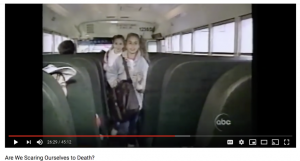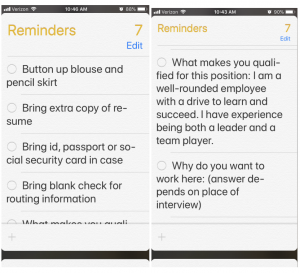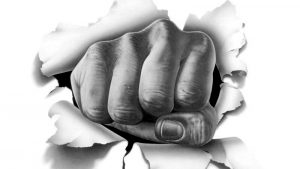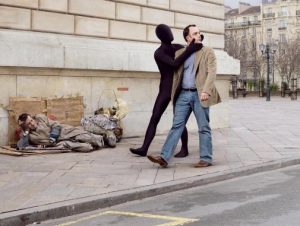Artifact 5
Module 4: Are We Scaring Ourselves To Death?
Media plays a huge role in altering our perspective. As a society we rely on media to bring us the most relevant, and up-to-date information about what is happening in the world around us. Different media stations can portray a more biased review towards a subject, which can heavily alter the perspective of the person viewing this station. Media uses representative heuristics to make simple comparisons to things in a short amount of time. This can lead to a lot of misinformed viewers. For instance, over the years Muslims have been closely shown alongside major terrorist attacks which in turn has made a lot of American viewers connect all Muslims to being terrorist, which is not the case. This idea also uses the availability heuristic because since a lot of major terrorist attacks have been from Muslims, they serve as a easy target to connect all attacks too. Media uses Muslims because they are available and relevant.

Are We Scaring Ourselves To Death? https://www.youtube.com/watch?v=WmiFShBQDIs
Seatbelts are a requirement in any vehicle, but rarely do kids use them on a school bus. Wearing a seat belt is a required and enforced state law. Yet, the government determined that kids were more likely to be hurt/killed getting on or off the bus than to be in a accident. It is quite confusing that as a child you grow up learning to always have a seatbelt on in a car in case something goes wrong while driving, but never putting on a seatbelt while on the school bus. School busses are very large vehicles and if one was to get into an accident where it flips then all those kids on board are going to be severely hurt.
Why I choose this:
I liked this artifact the least simply because it wasn’t as relevant as the other artifacts. The video we watched and the principles in the video were fairly outdated. I feel that the world has changed a lot since this video and I wanted more relevancy out of this artifact. I don’t really think I learned anything new in this artifact. I have already done a lot of media and psychology related assignments over the years so I have a really good understanding how much the media can and does influence our beliefs.
I choose this visual image because it encompassed the ideas of seatbelts that I talked about in this artifact. I explain why I believe seatbelts should be required on all buses.
Artifact 4
Module 5: “Self- and Other-Enhancement in Everyday Life”
Meeting your future in-laws for the first time.
- Self-enhancement: Showering, doing makeup and hair, and dressing nicely
- Other-enhancement: Bringing a house warming gift
Going on an interview for an internship.
- Self-enhancement: Dressing professionally and minimal makeup
- Other-enhancement: Smiling and having a firm handshake when greeting
Going on an interview for graduate school.
- Self-enhancement: Dress to impress
- Other-enhancement: Keep good eye-contact
Meeting your new boss for the first time.
- Self-enhancement: Dress to impress
- Other-enhancement: Nice firm handshake and eye-contact
Meeting the classmates who will be working with you on a group project.
- Self-enhancement: Smiling
- Other-enhancement: Listening and waiting patiently to speak
Meeting a professor for the first time.
- Self-enhancement: Smiling
- Other-enhancement: Nice firm handshake and eye-contact

Interview Checklist
Why I choose this:
I really liked this assignment and rated it number 4 out 5. I really learned a lot about the differences between how we perceive ourself and how we portray ourself. I liked doing the little exercises to compare different situations and how to approach them using self-enhancements or other enhancements. This artifact was also due around the same time as I was applying for jobs and doing interviews so these principles helped me out a lot in preparing for a great interview.
I included a visual image of my checklist for when I am preparing for an interview. I don’t usually use a checklist when preparing, but I felt that this really helped me gather everything I needed for my interview and can be used again and again.
Artifact 3
Module 12: Aggression Questionnaire
Out of the items that I circled the ones that indicated the most aggression are: #7) A man viciously kicks a cat and #11) A man mentally rehearses a murder he is about to commit. Physically abusing an animal under any circumstance is major sign of aggression and the use of the word viciously also stated that this kick was intended to severely harm the cat. For #11, the man was not showing any physical aggression, but he was mentally rehearsing the murder of someone which is a highly aggressive thing to do.
The way I see aggression is that it can involve being mentally or physically aggressive towards non-living or living things with the intention to harm. For #9 and #23 both state a person harming a non-living object even though those objects are not alive the person is still displaying an aggressive state. Aggression is not-accidental it is intentional. For #9 a man accidentally dropped a flower pot out of his window and it ended up causing harm to a pedestrian, but this was not aggression. The man had not planned to drop a pot out the window. If he had sat there above the window and pushed the pot with the intention of it possibly harming someone below then that would be aggression. This same principle also goes for ideas of self-defense. During self-defense a person is mentally aware that they must fight back, possibly harming the other person and therefore enter an aggressive state of mind.

https://breathwork-science.org/2018/10/03/targeting-a-brain-mechanism-could-treat-aggression/
Why I choose this:
This was one of my favorite artifacts to do which is why I have it set as best 3 out 5. I really loved testing my own belief of aggression and understanding that aggression can be towards a non-living object as well. I learned a lot about how I personally view certain situations of aggression and it had me wondering if my other classmates choose the same sentences as me or not. I know aggression is a more complex idea because what one person views as aggressive another may not. I really enjoyed that this artifact had me thinking deeply and challenging myself t see another perspective because I tried to look at the questions I rated as non-aggressive and analyze why I didn’t see those as aggressive.
I selected a sketch of a fist breaking through a wall as my visual image for this artifact. I felt that this really showed a close up perspective of physical aggression and that it was easy to understand this concept through the fist.
Artifact 2
Module 7: Attitudes
My results of the Attitude vs. Behavior survey did show quite a bit of dissonance. For all of the attitudes I listed that I agree completely that these should be done, but my behavior answers did not match my thoughts.
People feel the need to change either their attitude or behavior about a situation in order to balance them out because as people we feel the need to be consistent with words and actions. Our actions must match our words and our words must match our actions or the risk of our character is put in jeopardy.
Specifically for the question about homelessness I felt that a lot of people know this is a huge problem that should be fixed, but just like me those people don’t have the means to end homelessness altogether. I do not have the means to always do something even if I feel like I can. I can try to give a homeless person food or water, but I do not have the means to offer them a place to stay so therefore, how can I actively do something to address the problem of homelessness. Therefore, there is a huge amount of dissonance between my attitudes and behaviors in cases where I feel I can’t change something even if I try. Over the years, whenever I see a homeless person standing on the side of the road I look away. I try not to look at them in order to justify not helping them. It is really wrong, but if I can’t give them what they really need I would rather pretend they weren’t there so I don’t feel guilty.

Walking on By https://redeeminggod.com/after-walking-by-homeless/
Why I choose this:
I rated this artifact the second best out of all five because it made me question myself. This artifact talked about the differences between a persons’ attitudes and behaviors. I believe that a lot of people have a hard time matching what they believe with what they actually do. I am one of those people. I think one thing and often do the opposite, but that is not because I am choosing to defile my beliefs. I am an anxious person so often my actions are a result of panic where my mind fails me. I was able to realize that a lot of times I make excuses as to why my attitude doesn’t match my actions and this assignment really brought that to light. This artifact taught me that I need to be better about having my words match my actions because that builds trust and integrity.
I selected an image of a homeless person laying on the ground while a man walks by with a dark figure turning his head to look away from the homeless man. This represents me. I talked about how I feel when I see a homeless person on the streets. I feel helpless, because I don’t have anything to give them so instead I look away. I use to not look away. I use to smile or wave and treat them like another human, but then I could see that they took that as I have something and I didn’t. This artifact reminded me that I shouldn’t think that homelessness needs to change, unless I start helping out too. I needed to remind myself that “helping” could be that smile while I walk by because it could be just giving them a sense that they are being seen and that they aren’t forgotten.
Artifact 1
Module 14: Subjective Happiness Scale (SHS)
Happiness is very hard to regulate using just a scale based questionnaire. I think that the SHS is useful in gauging a general idea of where a person’s happiness may be, but that this questionnaire is simply too short to be a real factual representation of one’s happiness. I scored a 5 which an adult ranges from 4.5-5.5 with the highest score being a 7. I feel that my score is a good representation for my happiness based on other people’s happiness, but that it is not a good representation on my happiness on a day to day basis.
Our everyday culture and society is constantly telling us what “happiness” is supposed to look like. That in order to be happy you must be at the level of happiness you see in billboards, on Instagram, or YouTube. This is really toxic to our own happiness because we are constantly told that the level we are is not good enough.

My boyfriend and I of 3 years
Why I choose this:
I rated this artifact the best out of all of the five because I enjoyed taking the questionnaire to see a baseline of where my own happiness falls in conjunction with the average population of college students. My overall average was a little bit higher than the average college student and that was really surprising for me. I fell at a 5 which is right in the middle of the average adult population. I had one problem with this artifact and that was that I feel happiness can fluctuate from day to day, so taking this survey one day may result in a higher or lower score depending on outside factors. What I took away from this assignment was that happiness is relative and that we make our own happiness. Yes, society does heavily influence what we see as “happiness”, but looking beyond that we are in control of it.
I put a picture of my boyfriend and I as my visual image. I felt that what better way to show happiness than to show my own happiness. My boyfriend and I have been together for three years now and he has taught me that happiness is what I control not what others control.